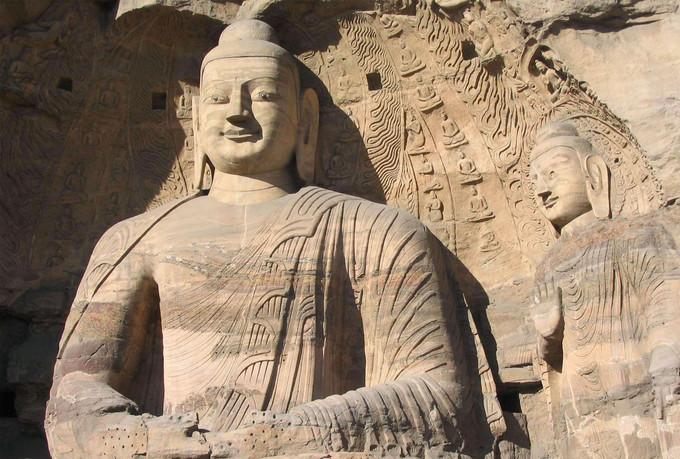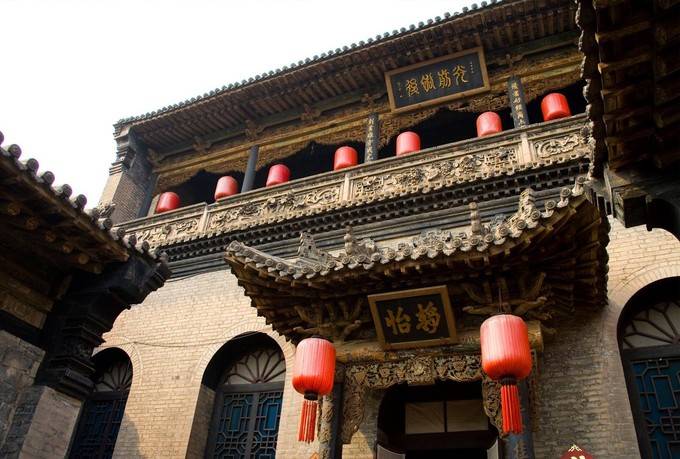The Yungang Grottoes were carved in the early Northern Wei Dynasty, around the period of Emperor Wencheng of Northern Wei in 460 AD, and have a history of 1540 years. There are 45 main caves, 252 smaller caves and niches, and over 51,000 stone statues, making it one of the largest ancient grotto complexes in China.
Yumen Pass
During the reign of Emperor Wu of Han, roads to the Western Regions were opened, and four counties were established in Hexi, marking the beginning of Yumen Pass. It was named after the jade that entered the pass from the Western Regions. The ruins of Yumen Pass, located at the westernmost end of the Hexi Corridor, are situated on the southern bank of the Shule River, surrounded by Gobi, desert, and meadows. It stretches from Cangting Beacon in the east to Xianming Beacon in the west, and to Nan Sandun in the south. The central urban area is centered around the ruins of Xiaofang City, distributed linearly from east to west. Currently, there are 2 city sites, 20 beacons, and 18 sections of the Great Wall. The Xiaofang City ruins, Dafang Pan City ruins, and the Han Great Wall ruins around Danggu Beacon are open to tourists.
Mount Wutai
Mount Wutai is the only Buddhist site in China where both Qing and Huang temples coexist. It is one of the five great Buddhist sanctuaries in the world and ranks first among the four famous Buddhist mountains in China, known as the 'Golden Wutai'. It is the sacred site of Manjushri Bodhisattva. Mount Wutai is not a single mountain but is composed of five peaks: East Terrace (Wanghai Peak), West Terrace (Guayue Peak), South Terrace (Jinxiu Peak), North Terrace (Yedou Peak), and Central Terrace (Cuiyan Peak). The peaks are flat at the top, resembling terraces, hence the name Mount Wutai.
Wujinshan National Forest Park consists of 25 high mountains, covering a total area of 55,000 mu, with a forest coverage of 31,000 mu, accounting for more than 80% of the area. The park is known for its beautiful scenery and numerous cultural relics, with over 480 species, including more than 330 plant species, making it a famous forest park in Shanxi Province. Wujinshan Carnival Valley features more than 30 leisure and entertainment facilities, integrating cultural and ecological landscapes, artistic performances, and themed games, making it an ecological theme park built within the forest park.
The Qiao Family Compound is a magnificent and grand architectural complex. Its exquisite design and craftsmanship reflect the unique style of Chinese residential architecture during the Qing Dynasty. It holds high value for sightseeing, research, and history. It is a unique treasure trove of art, praised as 'a pearl among northern residential buildings' and known as 'the Forbidden City of royal residences, the Qiao Family Compound for civilian houses.'
Pingyao Ancient City
Known as one of the 'four best-preserved ancient cities,' Pingyao in Shanxi is one of the only two ancient capitals in China that have been successfully declared as World Cultural Heritage sites as a whole. It was built during the reign of King Xuan of Zhou and expanded in the third year of the Hongwu reign of the Ming Dynasty (1370), making it over 2700 years old. The entire city has 21 attractions, and you can visit them all with a single pass. There are many attractions within the city; trendsetters can choose a few classic spots to check in, while those who enjoy a slower pace of life can stay for a while and savor the charm of the ancient city.
Hukou Waterfall is the second largest waterfall in China and the largest yellow waterfall in the world. The Yellow River rushes to this point, with steep stone walls on both sides, narrowing the river mouth to resemble a kettle spout, hence the name Hukou Waterfall. Upstream of the waterfall, the Yellow River's surface is 300 meters wide, but within a distance of less than 500 meters, it is compressed to a width of 20 to 30 meters. With a flow rate of 1000 cubic meters per second, the river water pours down from a cliff over 20 meters high, creating the majestic scene of 'a thousand miles of the Yellow River collected in one kettle.'

















